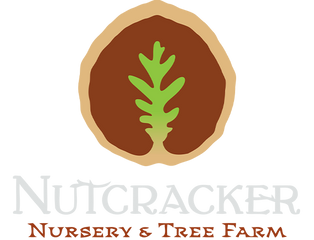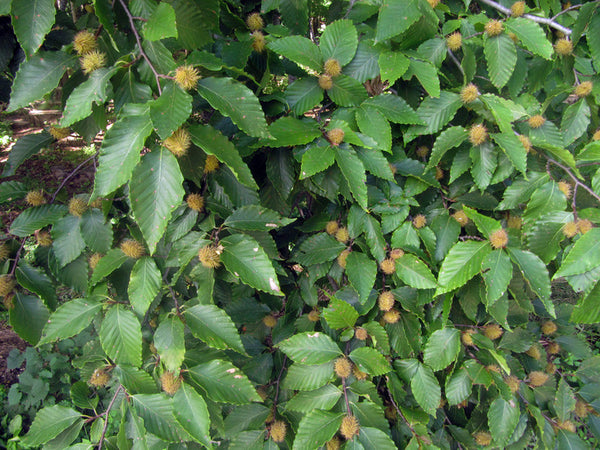American beech (fagus grandifolia)
Shipping calculated at checkout
Only 4 in stock
Need more? Contact us
The American beech, or American beech, is an undervalued urban tree. Without denying that it can be sensitive to certain elements of urban reality, there is no doubt that it can offer an ornamental aspect of great value, provided that we remain aware of its vulnerabilities. Beech is undoubtedly a tree with a magnificently refined appearance. The first thing that impresses is its one-of-a-kind bark. Soft and smooth to the touch, it's hard to believe it's a tree! Pale gray, silvery and almost blue. the bark of this tree has decorative value in itself.
Being quite slow growing, the new residential complexes will not have large specimens. Alternatively, a mature beech can reach 22 to 25 meters in height, with a crown width of around 18 meters. Normally, it is a very vertical growing tree, with a very even shape, but with small, slightly wavy branches. If, at the beginning of its development, the beech shoots upwards, towards the end of its growth, the branches will descend to move horizontally. In an open situation, it has a strong tendency to form an impressive quantity of low branches and fork everywhere. Training pruning is necessary if it grows in full sun, otherwise it must be planted in a semi-shaded environment.
Enjoying the shade of a mature beech tree in your backyard is a special experience. Its pale bark is complemented by its oval, toothed leaves which allow a few rays of sunlight to pass through. Indeed, at the start of the summer season, the leaves will be rather pale, silvery green, so the picnic atmosphere below becomes almost exotic. We then enjoy the songs of birds feeding on the nuts and the special lighting, blending with the bright colors of each component of the beech.
Later in the summer, the leaves, about 5 to 12 cm long, will become darker. In the fall, it will turn a bronze color, but will probably fall off the following spring, especially in the case of a younger tree. Its fruit is halfway between hazelnut and chestnut. Edible and mild in taste, it is recommended to grill them. It is possible to produce oil from its nuts, which are called beechnuts. These are covered with a shell with soft spines. Hardy in Quebec, the beech helps wildlife by feeding its fruit to a wide variety of animals, including birds and rodents. To this end, the beech is a native tree which contributes to maintaining healthy wildlife in urban areas.
Optimal conditions
Although beech can resist pollution in general, this is not the aspect that would make it highly recommendable. To ensure the longevity of the beech, certain conditions must be respected. At the edge of the street, it seems that he does not have the necessary resources to spare the de-icing salt, so we must avoid a plantation which would put him in such a situation. The backyard shaded by large trees will therefore be ideal. It will then remain to minimize the compaction of the soil, which constitutes another intolerance on the part of the beech. Furthermore, with its height of approximately 25 meters and its width of 18 meters, a distance of eleven meters is recommended with electrical wires. Then, the ideal conditions are an acid pH, rich, well-drained soil, as well as very moderate exposure to the sun. To give it a semi-shaded habitat, simply plant it near another tree. Indeed, the beech seems more comfortable when it has to compete with other trees.
As for the roots, they are superficial, so we don't worry about underground pipes. Planting is best done in a pot or in roots. Important fact: beech has a particular need for mycorrhiza, a symbiotic fungus on which the roots of 80% of plants depend to function properly. In the case of beech, research has demonstrated that a deficiency in mycorrhiza could substantially penalize recovery in spring. You can amend the soil with a mycorrhiza purchased in a nursery as soon as you plant it. Otherwise, in the case of a tree already planted, the application can be made by drilling holes of approximately three inches in the root system to put the mycorrhiza there. Some arborists offer this service. It’s easy to get a package deal when trimming a tree.
Beech pruning
Being a slow-growing tree, pruning needs will be less. Apart from early training pruning to ensure a strong long-term structure, crown elevation will need to be done until the appropriate crown height becomes natural.
The wood with its interwoven grain makes it hard as iron. By hand, it is difficult to break a small branch the size of your little finger. This means two things, one: the horizontal branches above the infrastructure are not likely to break at the first gust of wind. On the other hand, owners of a beech tree will benefit from keeping pruning wood for heating, recognized as one of the best (apart from the fact that it is also the hardest to split). It is also interesting to know that, among artisanal uses, the handles of tools, such as hammers, are often made with beech wood.
Diseases
Beech is not recognized as a tree particularly susceptible to disease. However, a few are worthy of mention here. Anthracnose, a fungal disease that attacks leaves. When you notice lesions on the foliage, brown and reddish spots, it is better to cut the branches which bear them and burn them.
For the rest, on rare occasions, small and large mushrooms can emerge from the bark. Then contact a certified arborist to confirm the presence of the following diseases: false tinder, flat ganoderma, or even colorless polypore. It will then be necessary to judge the severity. Sometimes a tree can suffer from the presence of a pathogen. Otherwise, felling the tree may be recommended. Beech cortical disease, being the main disease to observe, deserves to be described in more detail. The bark will be mortified by the presence of the pathogenic fungus, which will appear with a rounded appearance. Dead bark will leak a brown to red liquid. If the tree is too badly affected, it will be better to opt for felling. Furthermore, the disease being contagious, felling could also be a preventive measure for other beech trees nearby.
source: http://www.arboplus.ca/blog/essences-arbres/le-hetre.html
Growth speed
Light
Uses / Special remarks



